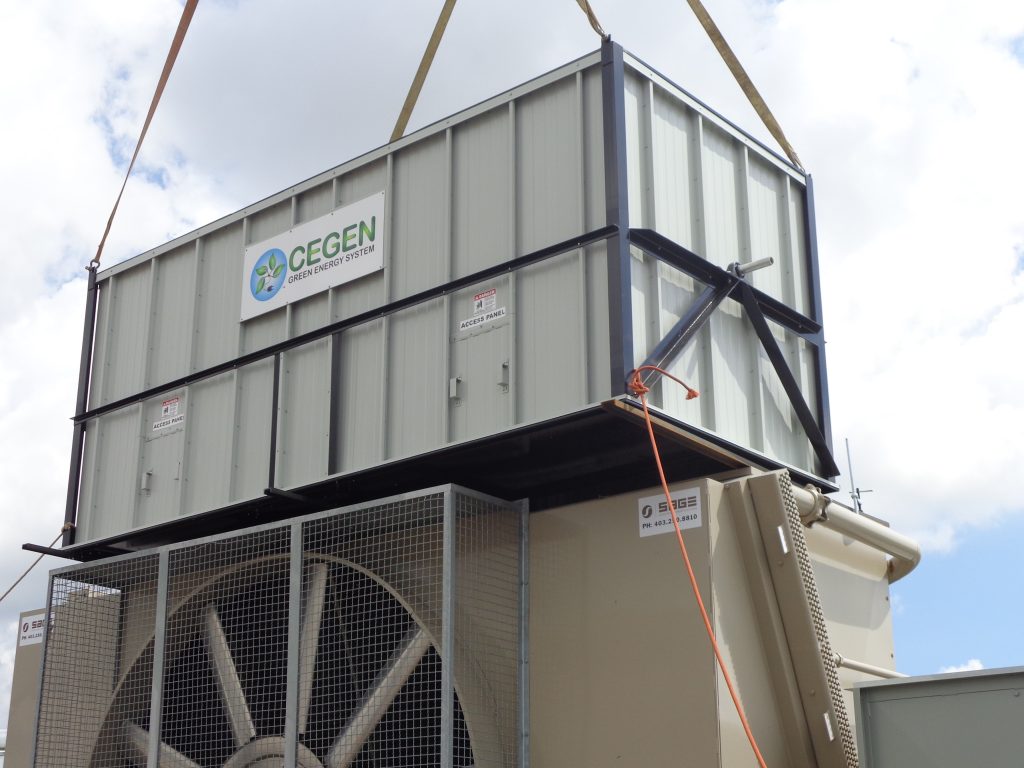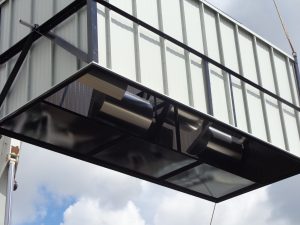Using cooler exhaust air to create green energy for gas sites
While fossil fuels and renewable energy might seem like an unlikely combination, there are increasing benefits for Australia’s gas industry in implementing green energy technologies. One company has created a new power generation unit that converts air from cooler exhaust on gas compressor stations into green energy to help power sites.

Over the last few years, renewables have been seen as the best way to decrease Australia’s reliance on fossil fuels, such as coal, but one issue that the industry keeps returning to is reliability. With power supply critical to all Australians, the reliability of renewables, which are intermittent, has become the missing piece of the energy puzzle.
While the aim for some parts of the industry is to have renewables replace fossil fuels, another solution that is gaining momentum is to actually pair them together to produce clean reliable energy.
Merging green energy with gas production
Canadian company CEGEN has created a new green technology for power generation in Australian gas projects, known as the CEGEN Green Energy System.
The system captures wind that is created by cooler exhaust on gas compressor stations and converts this air into energy. This turns the previously wasted exhaust into energy that can be used to help power the site, minimising the need for other power sources such as powerlines, which can be expensive to install and maintain.
 “In Australia, the unit is best suited to applications in the mid and upstream gas markets, as well as use in mining and HVAC,” CEGEN CEO Steve Morgan said.
“In Australia, the unit is best suited to applications in the mid and upstream gas markets, as well as use in mining and HVAC,” CEGEN CEO Steve Morgan said.
For a typical 1100 KW gas compressor, each CEGEN unit produces 7.4 kW/hr of green energy, which is approximately 61,320 kWh/year. For a gas compressor station this would prevent 34019.43kg of CO2 from being released into the atmosphere each year, and 68038.85kg for a coal station.
Mr Morgan said the unit has no significant impact on the performance of the compressor station, as its merely converting the wind that would previously go to waste into energy.
“In fact, it actually increases a site’s efficiency while substantially decreasing its CO2 footprint,” Mr Morgan said.
Cutting costs using renewables
While the reduction in CO2 emissions is a significant consideration for some projects, being able to maintain or reduce costs is a major factor for all Australian gas projects, especially in today’s market.
One of the main advantages of using a renewable power source such as the CEGEN unit is its ability to replace other expensive means of power in remote regions, such as powerlines.
Mr Morgan said installation of the CEGEN units has an approximate Return on Investment (ROI) of between 18-24 months. The ROI is immediate if the units are fully replacing the power supplied from remote powerlines.
“For example, in Canada the initial investment on a new site is $65,000, with annual maintenance of less than $1,000/year. In cases where the alternative power source would be the installation expensive power lines, the CEGEN unit would generate a return on investment of 54 per cent with a payback period of 1.8 years,” Mr Morgan said
“For large facilities with multiple coolers, it can even produce enough power to sell back to the grid or create an isolated grid that supplies to surrounding facilities. No matter the scenario, a CEGEN unit generates a healthy return on your investment.”
Bridging the power supply gap in Australia
 The CEGEN Green Energy Systemwas created and first manufactured in Canada, before being introduced in the US, Middle East, and Australia.
The CEGEN Green Energy Systemwas created and first manufactured in Canada, before being introduced in the US, Middle East, and Australia.
Wade Elofson, the founder of Powered, an Australian energy and resource-focused business development company that is helping to bring the CEGEN unit to the Australian market, said the merging of renewables into the oil, gas and mining sectors, is positive for the industry.
“The uptake of renewables is increasing and the gas industry should be jumping on board to see how it can implement renewable power generation technologies to help power sites, especially in Australia where remote projects can find it difficult to find a reliable power source.
“Companies are always on the lookout for ways to improve efficiencies and save money, but there has been an even bigger push recently to reduce their carbon footprints. We need to start looking at all factors in power generation and investing in innovative technologies that will allow the sector to keep up with changing demands,” Mr Elofson said.
The CEGEN unit will be installed in its first permanent location in Canada within the next month, with pilot projects in the USA now being finalised.The testing for this site has been on a full size package for a 1100KW compressor skid, as well as a package to fit Vertical Series coolers.


